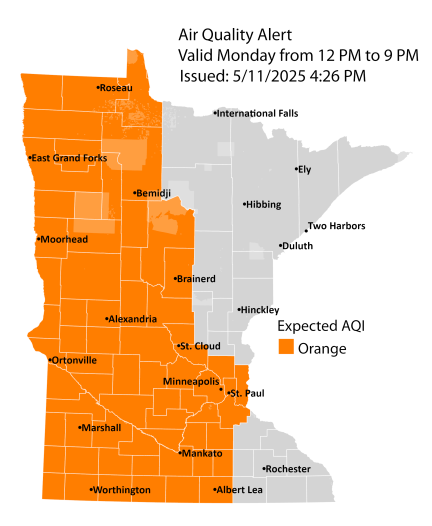
Air quality is expected to reach the orange AQI category in western and central Minnesota, which is unhealthy for sensitive groups.
The Minnesota Pollution Control Agency (MPCA) has issued an air quality alert for western and central Minnesota. The alert takes effect at noon on Monday, May 12, and runs until 9 p.m. The affected area includes the Twin Cities metro, Brainerd, Alexandria, Albert Lea, Marshall, Worthington, St. Cloud, Ortonville, Mankato, Bemidji, East Grand Forks, Moorhead, Roseau, and the Tribal Nations of Upper Sioux, Mille Lacs, Prairie Island, Leech Lake, and Red Lake.
Ground-level ozone is expected to be high during the afternoon hours on Monday across western and central Minnesota. Mostly sunny skies, warm temperatures, and low humidity will create an environment favorable for two types of pollutants (volatile organic compounds and nitrogen oxides) to react in the air to produce ground-level ozone. Ozone will be highest during the afternoon and early evening hours when sunshine is most abundant and temperatures are highest. Ozone will be low in the morning, late evening, and overnight. Another alert is possible on Tuesday afternoon as sunny skies and heat persist.